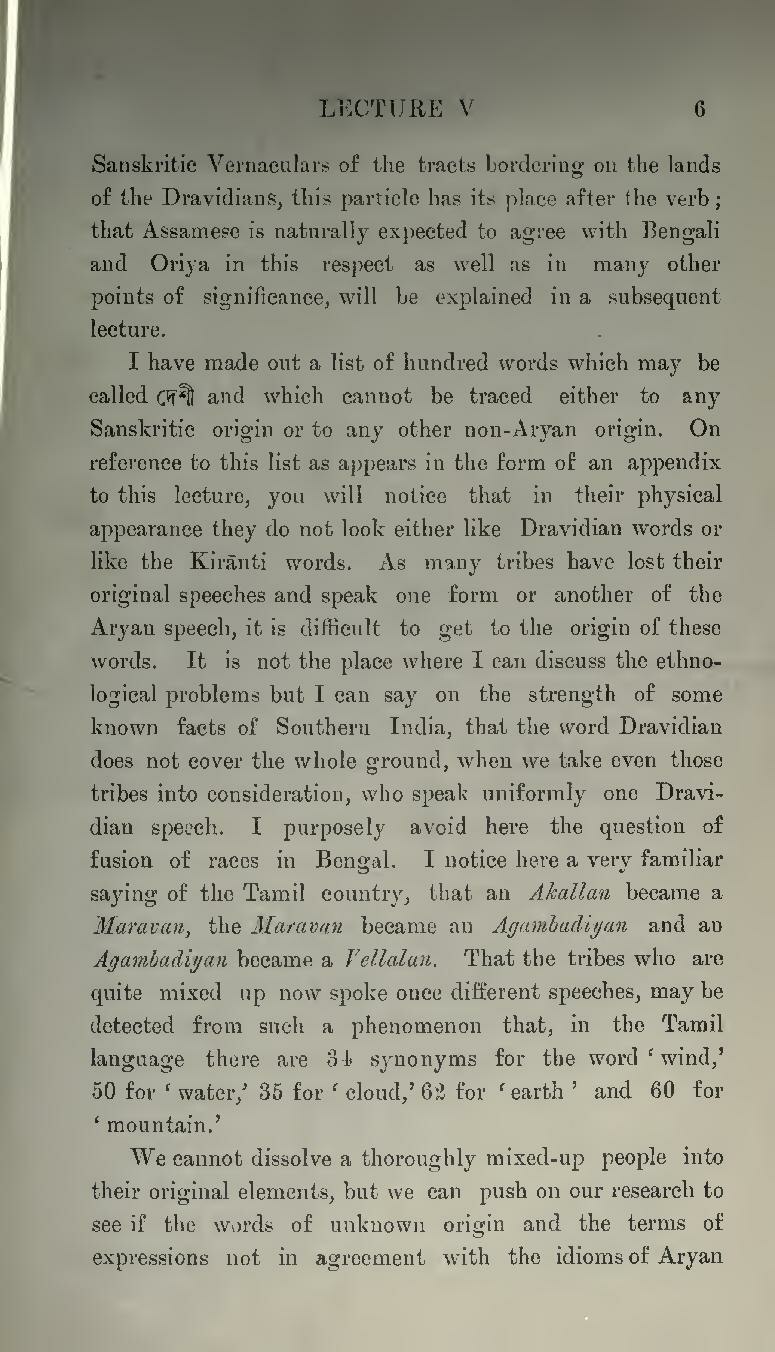Sanskritic Vernaculars of the tracts bordering on the lands of the Dravidians, this particle has its place after the verb; that Assamese is naturally expected to agree with Bengali and Oriya in this respect as well as in many other points of significance, will be explained in a subsequent lecture.
I have made out a list of hundred words which may be called দেশী and which cannot be traced either to any Sanskritic origin or to any other non-Aryan origin. On reference to this list as appears in the form of an appendix to this lecture, you will notice that in their physical appearance they do not look either like Dravidian words or like the Kirānti words. As many tribes have lost their original speeches and speak one form or another of the Aryan speech, it is difficult to get to the origin of these words. It is not the place where I can discuss the ethnological problems but I can say on the strength of some known facts of Southern India, that the word Dravidian does not cover the whole ground, when we take even those tribes into consideration, who speak uniformly one Dravidian speech. I purposely avoid here the question of fusion of races in Bengal. I notice here a very familiar saying of the Tamil country, that an Akallan became a Maravan, the Maravan became an Agambadiyan and an Agambadiyan became a Vellalan. That the tribes who are quite mixed up now spoke once different speeches, may be detected from such a phenomenon that, in the Tamil language there are 34 synonyms for the word 'wind,' 50 for 'water,' 35 for 'cloud,' 62 for 'earth' and 60 for 'mountain.'
We cannot dissolve a thoroughly mixed-up people into their original elements, but we can push on our research to see if the words of unknown origin and the terms of expressions not in agreement with the idioms of Aryan
